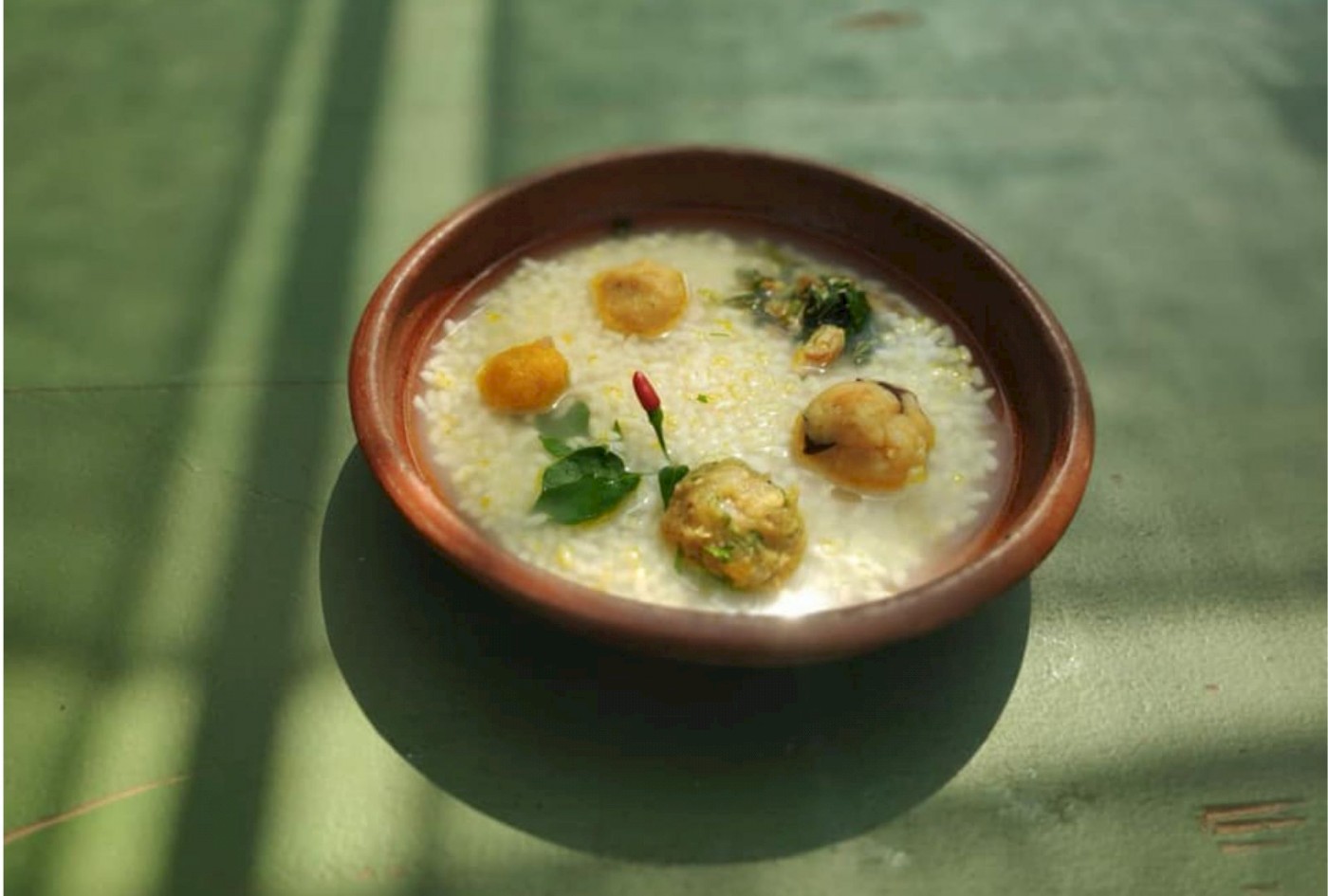
At the kitchen of the University Centre Cafeteria, Chef Anumitra Ghosh Dastidar of the Goa-based ingredient-driven sustainable restaurant Edible Archives is working on her special customised menu for the finale of the Re-Orienting Taste Project. “I create customised menus all the time; it’s my profession to weigh in individual preferences, the weather conditions, and locally grown ingredients in my cooking. But for this particular workshop I worked on no fewer than eight days to finalise the menu,” she says. Since the weather in Ahmedabad turned dry, she added ghee for natural moisture. She used three different types of local rice varieties and for garnishing included seasonal weeds grown locally.
The Re-Orienting Taste project has been an eight-part dialogue initiated by the Centre for Inter-Asian Research on the theme of food and medicine in India and China. It took off with a workshop last year exploring the question of taste in these two regions of Asia. What began with a cooking and tasting session held on the Ahmedabad University Campus in September 2021, finally wrapped up last month with Anumitra curating a culinary experience for an audience that engaged in conversation over these shared culinary traditions. The seeds for the project were sown at the Kochi Biennale 2019 when the Centre's Director Tejaswini Niranjana first got introduced to Chef Anumitra and Shalini Krishan, Founders of Edible Archives. “I was at the Biennale and I met up with these two people who were so passionate about food that they had worked for four months not just cooking but having us experience food as an art form. I was fascinated that they engaged with culinary art so uniquely,” she says.
Professor Niranjana is expecting to draw upon these conversations to release a book of 20 shared recipes reimagined through these cultural, medicinal, and culinary connections between India and China. Shalini brings up some interesting perspectives from the dialogue between the medical practitioners of the two regions, “Both Ayurveda and TCM use the metaphor of a garden for the treatment of the body rather than that of a war arena adopted by allopathy. While emphasising on prevention, both also believe in healing and in keeping everything balanced. While there is nothing that’s “bad” for the body, how much it throws your body out of balance is determined by several factors. Which means that both practices believe that certain things have a particular effect on particular bodies.” Citing the example of banana and milk, she says that Ayurveda agrees with the aggravation of kapha in the body, yet states that a few people in some locations can handle it. Seasonality, location (including the location where the ingredient is grown besides your own), and individual composition are taken into account in both practices. “This is no longer your grandmother nagging you to eat right but a modern practice of an old tradition in India and also in China,” Shalini adds.
Apart from the overlap of concepts, the two practices also have some key differences. “There is a lot of disagreement over dairy; Ayurveda relies heavily on ghee and buttermilk but TCM practitioners say that ‘milk is for baby cows’. Yet, at the core, each practice believes in eating local, so my TCM practitioner actually asked me to have ghee,” says Professor Niranjana. “At a restaurant it’s impossible to serve food that will not not clash with something or the other in a person, unless you create a menu for every specific individual,” says Shalini.
The ethos of Edible Archives is to use seasonal and local ingredients which ties in with Ayurvedic principles. The restaurant changes its menu 3-4 times a year looking at the weather conditions, the place which they are serving at, the food variety locally and seasonally available, and then individual constitution. “We believe that your body absorbs the sunlight, the heat, the moisture, water, - the five elements, likewise it must absorb food. For this particular conceptual dinner, I am not pandering to the usual menu of starters, main course, and dessert but instead offering just two dishes providing a balance of tastes – sweet, sour, salt, astringent, pungent, and bitter - balanced like in Chinese cuisine," explains Anumitra.
More than 60 per cent of the world’s population today lives in Asia, with few flexible platforms and partnerships between scholars and practitioners in the inter-Asian region. Professor Niranjana has been focusing on reimagining these connections through the Re-Orienting Taste project and the Saath-Saath music collaboration project supported by the Hong-Kong-based Moonchu Foundation.